
I dislike non-commercial stations that run exclusively satillite fed syndicated programming. The worst offender in this catagory is the religious broadcaster. (Fybush calls these satcasters) My main objection to is
not to the content. It's the source of the content to which I object.
follow me on this detour:The radio spectrum, like any physical property, or natural resource is finite. Each city can only contain so many broadcasters, so a government body exists to manage the space, the FCC. It's no different from your town council deciding who gets to develop the waterfront property. The point being; if the radio band is the property of a community, then content on the radio that originates from outside the community is, in a sense... stolen from them.
We all know perfectly well that many religious stations receive all programming via satillite. They then time-shift this programming and rebroadcast to meet some obtuse, nominal and ultimately impotent local programming requirement. Let me stop right here and point out that not all religious broadcasters are like this. Right near me is WNAP-AM 1110 who runs almost entirely local programming.
http://wnap1110am.com/ It's a fine station who serves Norristown and the surrounding community just fine.
 By comparison WKDN 106.9 Camden runs zero local programming. http://www.familyradio.com/index.htm
By comparison WKDN 106.9 Camden runs zero local programming. http://www.familyradio.com/index.htm
That RF belongs to the Camden Philadelphia Area, yet zero of their programming content originates locally. The FCC would tell you that somehow they serve our community. I would debate that strongly. That same signal could belong to any civic, religious or community group and serve Philadelphia more fully.
Out of fairness let me examine my local NPR affiliate: WHYY 90.9 FM Philadelphia, PA Look at their schedule Monday thru Friday: http://www.whyy.org
35 hours of BBC between the overnights, the news hour and the world
31 hours of NPR nationally syndicated programming from talk of the nation, morning edition, all things considered, News and Notes, Creators at Carnagie... etc
6 hours of Here and now & Sound Print from MPR
5 hours of Marketplace from American Public Media
1 hour of This American Live from Public Radio International
In the end, only these local programs run Monday thru Friday. Out of a total possible 120 hours 16 originate locally. That's about 14%. It's not a lot. but it's more thant zero. These local shows are:
5 hours of Radio times
10 hours of Fresh air (counting the afternoon rebrocast)
1 hour of Voices in the family
That being said, the WHYY weekends are a smorgasbord of local shows.
 This one is a one-of-a-kind. WJFF Radio Catskill 90.5 FM. They play primarily classical, jazz and folk. The only hydroelectrically powered public radio station.
This one is a one-of-a-kind. WJFF Radio Catskill 90.5 FM. They play primarily classical, jazz and folk. The only hydroelectrically powered public radio station. They have only two paid employees, the rest is all community volunteers, like it should be. They run a few popular syndicated programs from NPR, PRI and Pacifica.. and a couple unknown ones too. The rest of the week is all locals talking local politics, local news and whatever music they please. They even have an all Australian music program. Beat that!
They have only two paid employees, the rest is all community volunteers, like it should be. They run a few popular syndicated programs from NPR, PRI and Pacifica.. and a couple unknown ones too. The rest of the week is all locals talking local politics, local news and whatever music they please. They even have an all Australian music program. Beat that!
 The Grinnell College campus is in close proximity to 2 rail lines. I quote: "The college was invited to move to [Josiah Grinell's] newly-founded town, located at the intersection of two major railway lines. Today, one can still experience the effects from this choice of location in the form of a railroad that cuts across the college campus."
The Grinnell College campus is in close proximity to 2 rail lines. I quote: "The college was invited to move to [Josiah Grinell's] newly-founded town, located at the intersection of two major railway lines. Today, one can still experience the effects from this choice of location in the form of a railroad that cuts across the college campus."
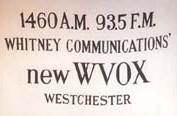 I first heard WRTN over two years ago. They ran a very straight-ahead standards station; lots of Sinatra, a little big band, a lot of Glen Miller As they say "It is what it is." And then they added some reggae programing. It stoof out as kind of random but they blocked it out pretty well with talk programs on each side of the slots.
I first heard WRTN over two years ago. They ran a very straight-ahead standards station; lots of Sinatra, a little big band, a lot of Glen Miller As they say "It is what it is." And then they added some reggae programing. It stoof out as kind of random but they blocked it out pretty well with talk programs on each side of the slots. 
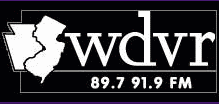 Across most of New Jersey I listened to 89.7 WDVR. They play a mix of Americana, Folk, Triple-A and old Country. They never come off slick or trite; always straddling that middle ground of genuine provincial hominess, never parodying themselves. ...And that Jimmie Rodgers-style country yodel station ID is ABSOLUTELY KILLER . Long live the Country Store.
Across most of New Jersey I listened to 89.7 WDVR. They play a mix of Americana, Folk, Triple-A and old Country. They never come off slick or trite; always straddling that middle ground of genuine provincial hominess, never parodying themselves. ...And that Jimmie Rodgers-style country yodel station ID is ABSOLUTELY KILLER . Long live the Country Store.
 WTIP 90.7 FM Grand Marais, MN -
WTIP 90.7 FM Grand Marais, MN - 
 The multicast idea starts innocently enough. The first HD multicaster was WFAE 90.7 Charlotte, NC. As usual Public Radio paved the way. They experimented with up to 11! channels one day last April. There were only a few models of HD tuners at that tie and I am uncertain if there were ANY that were multicast-capable. The initial talk is about splitting talk programming and music programming into seperate channels, or to have channels of all local traffic information. It all seems so idealist at the time, stations would provide programming because they could, because they wanted to, because their listeners would like it. NPR promises 24 more multicasting outlets by the end of this year. [It's rumored that Phillys local 90.1 WRTI intends to split Their Jazz and Classical programming into two seperate channels eventually. ]
The multicast idea starts innocently enough. The first HD multicaster was WFAE 90.7 Charlotte, NC. As usual Public Radio paved the way. They experimented with up to 11! channels one day last April. There were only a few models of HD tuners at that tie and I am uncertain if there were ANY that were multicast-capable. The initial talk is about splitting talk programming and music programming into seperate channels, or to have channels of all local traffic information. It all seems so idealist at the time, stations would provide programming because they could, because they wanted to, because their listeners would like it. NPR promises 24 more multicasting outlets by the end of this year. [It's rumored that Phillys local 90.1 WRTI intends to split Their Jazz and Classical programming into two seperate channels eventually. ]
 Nice history of some Philly call flips here:
Nice history of some Philly call flips here: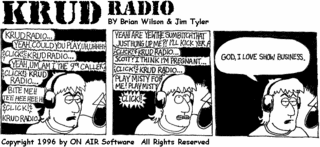
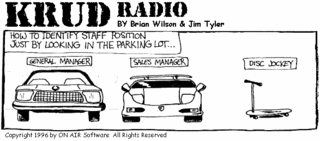
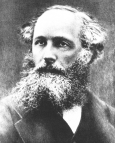 He was a brilliant electromagnetic theorist a apparently very naughty man. Maxwell calculated that the speed of propagation of an electromagnetic field is approximately that of the speed of light. He proposed that the phenomenon of light is therefore an electromagnetic in origin. Because charges can oscillate with any frequency, Maxwell also concluded that visible light forms only a small part of the entire spectrum of possible electromagnetic radiation. (see post on frequency allocations 6/15)
He was a brilliant electromagnetic theorist a apparently very naughty man. Maxwell calculated that the speed of propagation of an electromagnetic field is approximately that of the speed of light. He proposed that the phenomenon of light is therefore an electromagnetic in origin. Because charges can oscillate with any frequency, Maxwell also concluded that visible light forms only a small part of the entire spectrum of possible electromagnetic radiation. (see post on frequency allocations 6/15)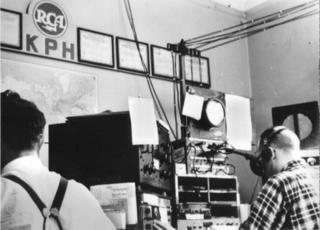 According to the Maritime Radio Historical Society, the station would have been 100 this year. It began in 1905 as Morse station "PH." (Remember back then call letters were voluntary. You could make up anything you wanted.) The call letters referred to the Palace Hotel in San Francisco, where the station was located. Later, regulators later added the K to the call sign. KPH was once known as the "Wireless Giant of the Pacific."
According to the Maritime Radio Historical Society, the station would have been 100 this year. It began in 1905 as Morse station "PH." (Remember back then call letters were voluntary. You could make up anything you wanted.) The call letters referred to the Palace Hotel in San Francisco, where the station was located. Later, regulators later added the K to the call sign. KPH was once known as the "Wireless Giant of the Pacific."
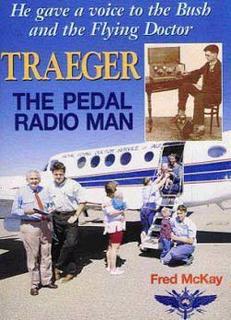

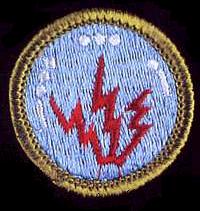 1. Explain what radio is. Include in your explanation: the differences between broadcast radio and hobby radio, and the differences between broadcasting and two-way communicating. Also discuss broadcast radio and amateur radio call signs and using phonetics.
1. Explain what radio is. Include in your explanation: the differences between broadcast radio and hobby radio, and the differences between broadcasting and two-way communicating. Also discuss broadcast radio and amateur radio call signs and using phonetics.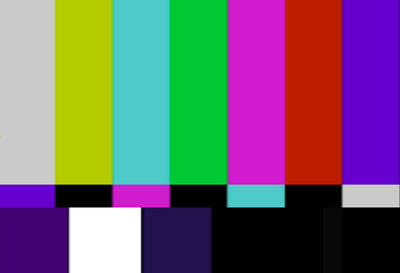 If you need a radio fix try visiting these gentlemen:
If you need a radio fix try visiting these gentlemen:
 In 1942, arguing that the new jukeboxs were putting live musicians out of work, the American Federation of Musicians declared a ban on recording. The
In 1942, arguing that the new jukeboxs were putting live musicians out of work, the American Federation of Musicians declared a ban on recording. The  Sounds familiar yet? The free music, doesn't sound as good as the original recorded media, but its popular, because its free. The then RIAA tries to sue the "offender" into submission...etc. A lots of bright folks see a parallel between the RIAAs recent desperate assaults on P2P platforms and their previous 1930s foolishness. I tend to agree. They've had a long history of resisting change, litigious zeal; and selective perception. Great article
Sounds familiar yet? The free music, doesn't sound as good as the original recorded media, but its popular, because its free. The then RIAA tries to sue the "offender" into submission...etc. A lots of bright folks see a parallel between the RIAAs recent desperate assaults on P2P platforms and their previous 1930s foolishness. I tend to agree. They've had a long history of resisting change, litigious zeal; and selective perception. Great article 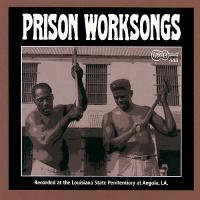

 I dislike non-commercial stations that run exclusively satillite fed syndicated programming. The worst offender in this catagory is the religious broadcaster. (Fybush calls these satcasters) My main objection to is not to the content. It's the source of the content to which I object.
I dislike non-commercial stations that run exclusively satillite fed syndicated programming. The worst offender in this catagory is the religious broadcaster. (Fybush calls these satcasters) My main objection to is not to the content. It's the source of the content to which I object. By comparison WKDN 106.9 Camden runs zero local programming.
By comparison WKDN 106.9 Camden runs zero local programming. 
 WFIU 103.7 Bloomington, IL
WFIU 103.7 Bloomington, IL 

